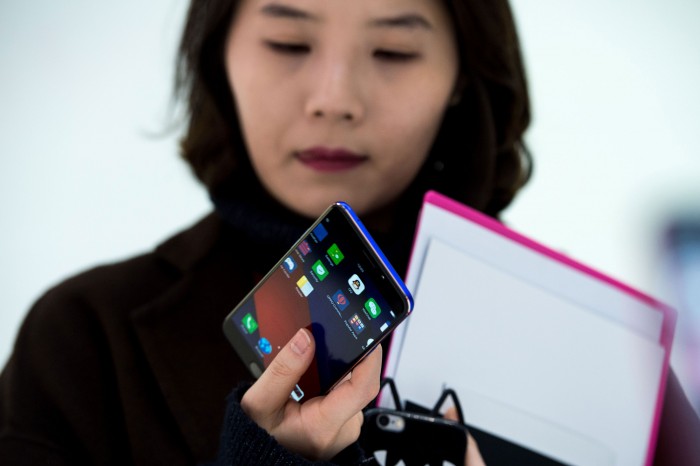Is Apple’s Big Problem in China Its Small-Minded Outlook?

Apple isn’t the most popular smartphone manufacturer in China. It’s not even the second. Or the third. In fact, people would rather buy a handset made by the likes of Huawei, Oppo, or Vivo.
Those three are most popular smartphone brands in China, accounting for just under half of the new smartphones shipped in the country, as Bloomberg recently pointed out. Apple languishes in fourth place, accounting for just 9.6 percent of sales.
It wasn’t always so bad for Apple. The iPhone was the favorite smartphone in China for five years and accounted for 14.3 percent of smartphone sales in 2015. So what went wrong?
According to Duan Yongping, the cofounder of Chinese smartphone manufacturers Oppo and Vivo, it’s all down to a reluctance to cater to the whims of foreign markets. In an interview with Bloomberg, Duan said that “Apple couldn’t beat us in China because even they have flaws,” and that “they’re maybe too stubborn sometimes.”
He’s referring to the company’s single-minded focus on a slim product range that must ultimately fit all users who wants to buy into the Apple experience, wherever they happen to live. Duan points out, for instance, that Apple wouldn’t dare make cheap devices with high-end features in the same way that Oppo and Vivo do, for fear of diluting its brand elsewhere.
But, it seems, Chinese consumers would now rather get their specs and have a little change to spare. Devices like Oppo’s F1 Plus, pictured above, provide most of the looks and features of an iPhone—but for somewhere in the region of $430, versus $770 for the cheapest iPhone 7 Plus. What it lacks in polish is meant to be made up in savings, and that selling point is now proving popular.
Speaking at the China Development Forum in Beijing this weekend, Apple’s CEO, Tim Cook, claimed that the company doesn’t have a specific market-share goal for China. It is, however, clearly committed to cracking the market. Last week, it announced that it was committing over $506 million to research in China, with plans to open two brand new R&D centers—one in Shanghai, the other in Suzhou. They will join two existing centers in Beijing and Shenzhen.
And Apple is still planning to focus its manufacturing efforts in the country. Speaking at the same event, Cook took the opportunity to expound on the virtues of globalization, no doubt to the annoyance of a certain President Trump. That shouldn’t come as a surprise: expertise and established supply chains make China a no-brainer as a manufacturing base for any tech company building products at scale.
What may need to change, though, are some of the products that are leaving the production line. If Duan is correct and sales continue to elude Apple, Cook may have have little choice but to cater to the whims of the market.
(Read more: Bloomberg, Wall Street Journal, “The All-American iPhone,” “Tim Cook’s New Year’s Resolutions,” “Competing with the Chinese Factory of 2017”)
Keep Reading
Most Popular
Large language models can do jaw-dropping things. But nobody knows exactly why.
And that's a problem. Figuring it out is one of the biggest scientific puzzles of our time and a crucial step towards controlling more powerful future models.
The problem with plug-in hybrids? Their drivers.
Plug-in hybrids are often sold as a transition to EVs, but new data from Europe shows we’re still underestimating the emissions they produce.
Google DeepMind’s new generative model makes Super Mario–like games from scratch
Genie learns how to control games by watching hours and hours of video. It could help train next-gen robots too.
How scientists traced a mysterious covid case back to six toilets
When wastewater surveillance turns into a hunt for a single infected individual, the ethics get tricky.
Stay connected
Get the latest updates from
MIT Technology Review
Discover special offers, top stories, upcoming events, and more.